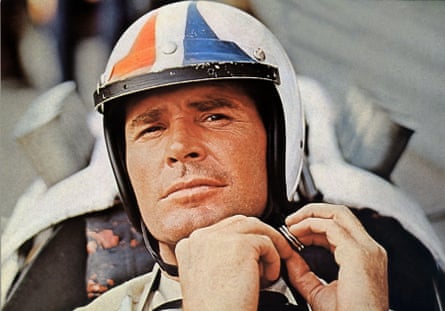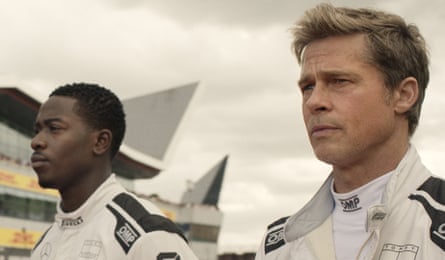
‘Let’s try to get the season off to a good start, shall we? Drive the car. Don’t try to stand it on its bloody ear.”
Have you watched the movie? It’s about a rule-breaking American Formula One driver, the kind who blows past blue flags and crashes into his own teammate. You must have heard of it. They shot it in real race cars, across some of the most prestigious circuits in the world. It even had contemporary world championship drivers making notable cameos on the track.

But neither he nor I had anticipated just how much it would remind us of Grand Prix – or how well that 59-year-old work would stand up in comparison. The Silverstone marching band, paraded past the clubhouse by a moustachioed sergeant-major, has given way to night-race fireworks in Las Vegas, and the ruinous cost of running an F1 team has jumped from a few hundred thousand to £100m. The stomach-buzz as the asphalt whizzes beneath you remains the same.
Putting the two stories side by side does, however, show you interesting ways the sport has changed. Grand Prix’s opening lingers, fetishistically, over images of working pistons and twisting wrenches. Such lowly mechanical details are almost entirely absent in F1, where the team headquarters looks like a space station and every element of the engineering process is rendered in gleaming sci-fi.
There’s also a lot less death. Frankenheimer’s crashes are genuinely shocking – not because the stunts are realistic (and they are) but because of the bluntness of their outcome. Drivers are catapulted from their seats to fall on whatever part of the landscape they meet first. Spectators aren’t safe either. The fact that horrifying incidents are a part of the public’s fascination with Formula One is a recurring theme.

F1 still plays on the life-or-death stakes, but does it in a very different way, as you’d expect from a film licensed by the governing body as a big-screen advert for the sport. It’s also pretty keen that everyone you meet on screen shows motor racing in a good light. Team principals are loving family men! Drivers’ managers are cuddly BFFs! People cycle eco-consciously to work! Everyone is so empathic and good at giving advice!
It was the latter that had me balking at the chutzpah. There’s a point where our hero tells the rookie to stop thinking about his social media. The hype, the fan engagement – “it’s all just noise,” he says. This in a movie that was produced, at phenomenal cost, as a method of growing hype and fan engagement. The film’s only baddy, meanwhile, is a corporate investor, who we know must be a bad ’un because he spends his time schmoozing The Money in hospitality. Here’s a game for you when you’re watching F1: try to go two minutes without seeing or hearing the name of a brand that’s paid to be there. I left the auditorium still blinking the name of accountancy software.
By contrast, Frankenheimer’s film seems bracingly honest. In Grand Prix, the drivers may have moments of self-reflection but they’re also uncompromisingly selfish in their pursuit. The philosophical Frenchman Jean-Pierre Sarti suggests they live in denial: “To do something very dangerous requires a certain absence of imagination.”
“Why do we do it? Why not tennis, or golf?” It’s the question at the centre of every motor-racing film. In Le Mans, Steve McQueen answered by stripping out everything but the sound and feel of the track. F1’s hero describes the feeling when he’s “flying” (not for nothing does he arrive walking down the tarmac, carrying a duffel like a certain fighter pilot).
Perhaps that’s what makes motor racing ripe for big-screen treatment – it’s the most literally escapist form of sport there is. If F1 gives it the glossy treatment, Grand Prix sees beneath the sheen.




